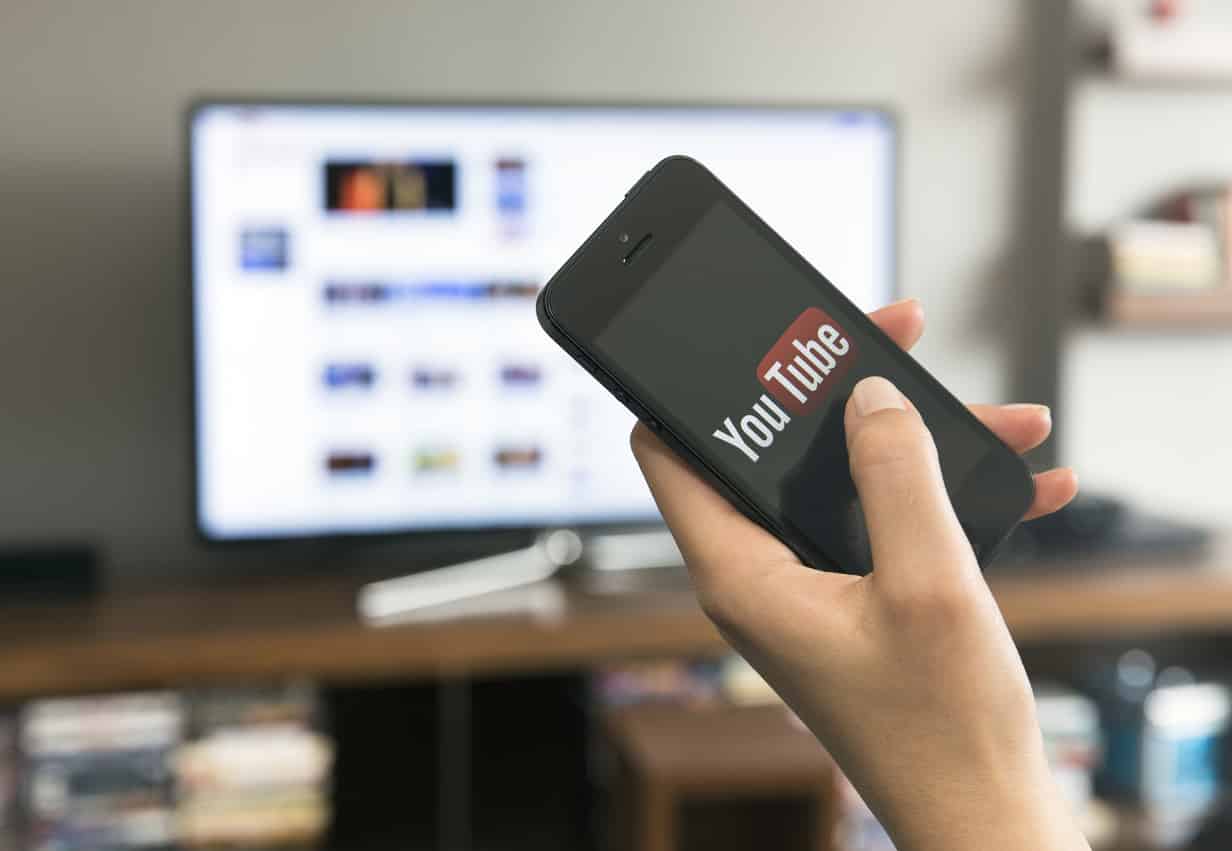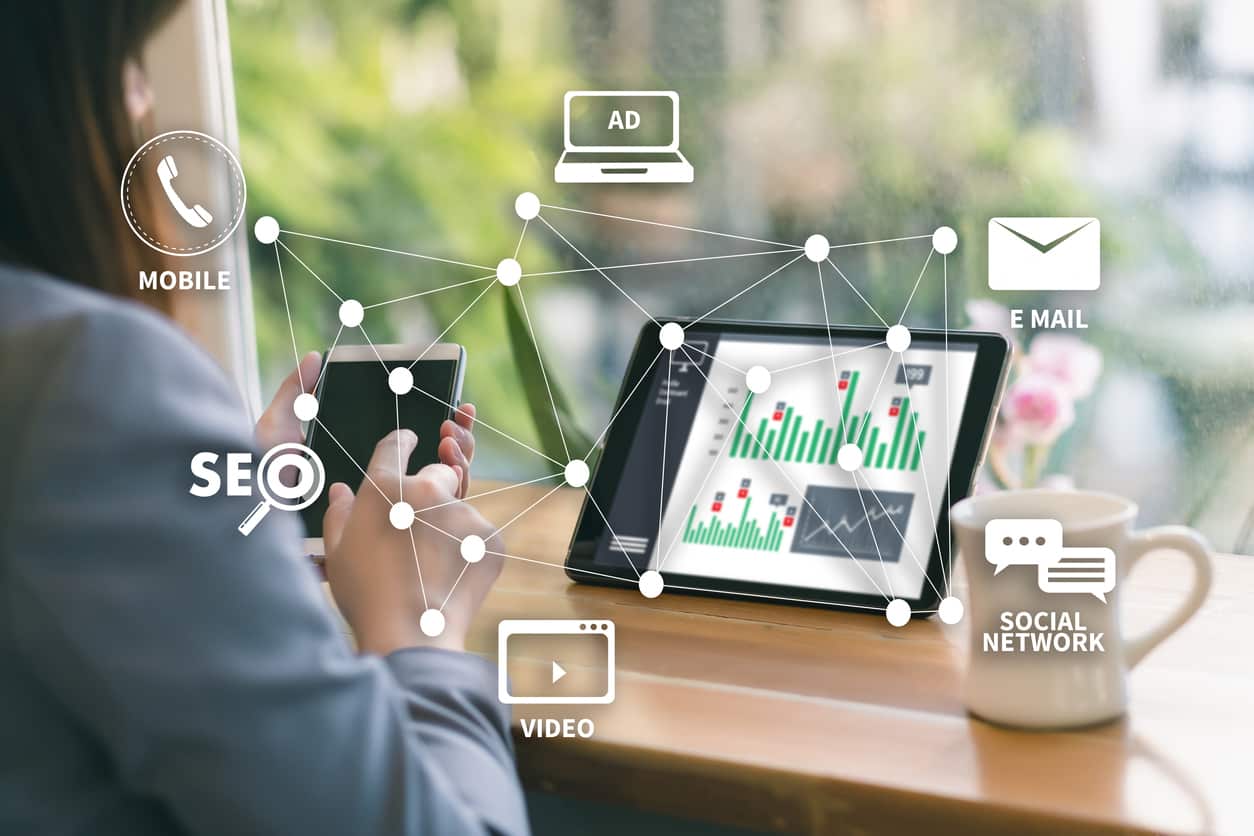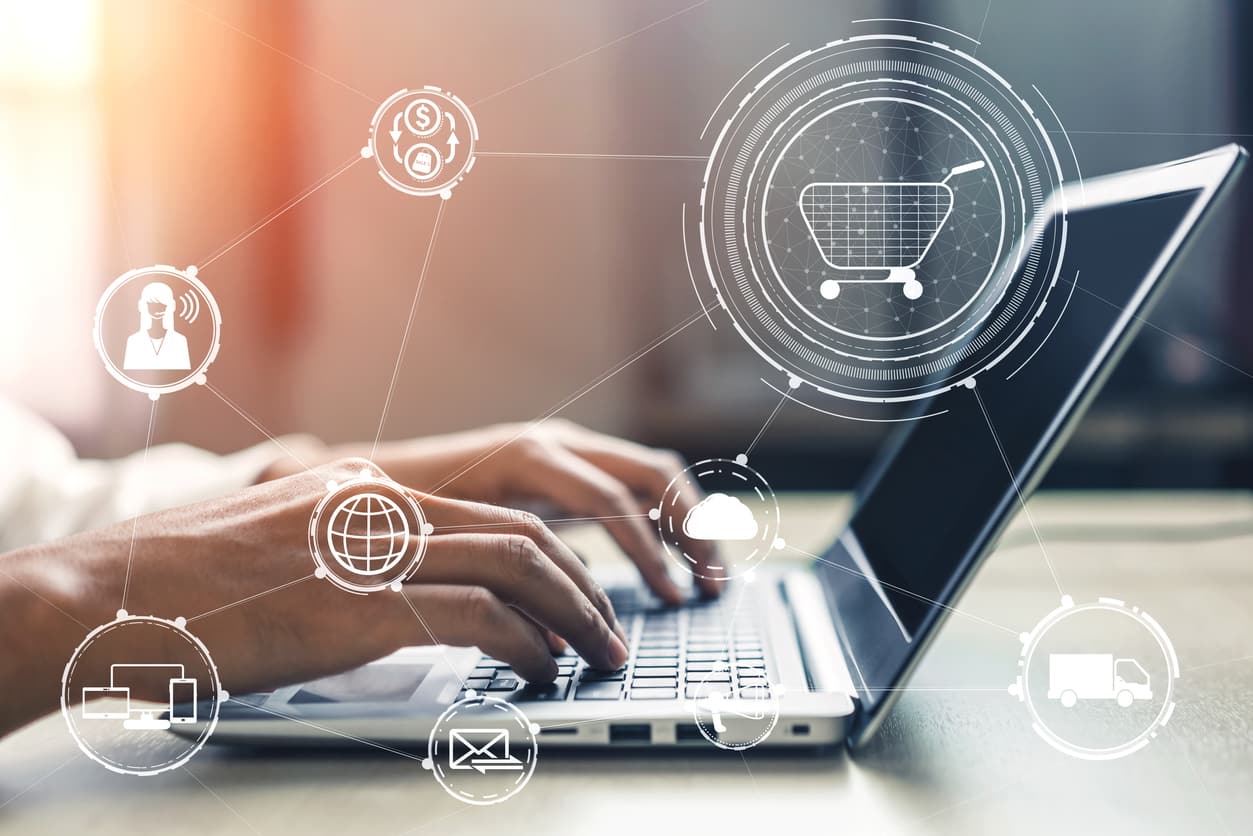- 1. Artificial Intelligence (AI) is Everywhere in Marketing
- 2. Social Commerce and Live Streaming are Exploding
- 3. Video Marketing Still Dominates
- 4. Voice and Visual Search are Growing
- 5. Hyper-Personalization and Better Customer Experiences
- 6. Data-Driven Marketing and Marketing Mix Modeling are Essential
- 7. Retail Media Networks (RMNs) are Growing
- 8. Sustainability and Ethical Marketing are Important
- 9. Immersive Experiences with AR and VR are Here
- 10. Privacy and Data Security are Crucial
1. Artificial Intelligence (AI) is Everywhere in Marketing
AI is a basic tool in digital marketing now. It helps marketers automate tasks, personalize customer experiences, and understand data better.
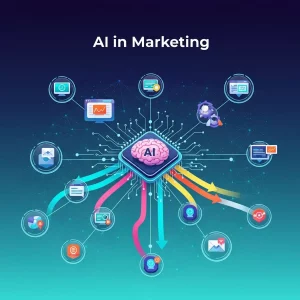
AI helps you make smarter decisions fast. It analyzes huge amounts of data to predict what customers will do, improve ad campaigns, and deliver personalized content. A McKinsey report states that 75% of companies using AI plan to move employees into more important roles. This shows how AI increases efficiency.
Facts and Figures:
- The AI in marketing market will reach $217.33 billion by 2034. This is a 26.7% growth each year. (Digital Marketing Institute)
- 85% of marketers already use AI tools to create content. (CoSchedule’s State of AI in Marketing Report 2025)
- Marketers using AI are 25% more likely to report content success than those who do not. (CoSchedule)
- 70% of digital marketing strategies use AI now. This will reach 75% by 2025. (TheeDigital)
- Over 50% of businesses use AI for email, search, and social media. (Smart Insights)
Examples:
- Amazon: This e-commerce company uses AI to recommend products based on what users browse and buy. This deep personalization drives a large part of their sales.
- Coca-Cola: Coca-Cola used AI in its “Create Real Magic” campaign. It let users make unique artwork with AI tools. This engaged their audience and provided many pieces of user-generated content.
- Fit Bod: This company uses AI to create personalized fitness plans based on user information.
- Generative AI: Tools like Generative AI improve content for search engines.
2. Social Commerce and Live Streaming are Exploding
Social commerce mixes online shopping with social media platforms. Users can find and buy products without leaving their favorite apps. Live stream shopping, a key part of social commerce, combines live video with easy online shopping.
Social commerce makes buying easier. It lets consumers purchase from brands they follow quickly. Live streaming adds an interactive and fun part to shopping. This leads to more engagement and sales.
Facts and Figures:
- The global social commerce market will reach $924.47 billion in 2025, growing by 11.8% each year. (ResearchAndMarkets.com)
- The livestream e-commerce market will grow from $19.86 billion in 2025 to $258.76 billion by 2034, with a 33.01% growth rate each year. (Precedence Research)
- The Asia-Pacific region leads in livestream e-commerce. It makes up 66% of the market in 2024. (Precedence Research)
Examples:
- TikTok: TikTok’s “TikTok Shop” feature allows brands and creators to sell products directly through videos and live streams. This has been very successful, especially in fashion and beauty.
- Shopee: This Southeast Asian e-commerce platform has invested heavily in live streaming. It hosts regular events with influencers that drive many sales and user engagement.
3. Video Marketing Still Dominates
Video remains a main part of digital marketing. Short-form and vertical video formats lead the way. Consumers increasingly prefer video content to learn about products and services. This makes video a key tool for engagement and education.
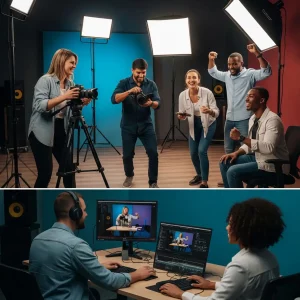
Video is a very engaging way to share complex information simply. It is also easy to share, which increases its reach. Making videos for mobile-first, vertical viewing is important for getting audience attention on social media.
Facts and Figures:
- 73% of consumers prefer to watch short videos to learn about a product or service. (The Leap)
- By 2025, automated video advertising on platforms like YouTube will become even more common.
- AI-powered video editing tools make it easier and faster for marketers to create good video content.
- 62% of searches include video carousels. (TheeDigital)
Examples:
- Lenskart: This Indian eyewear retailer uses an augmented reality (AR) try-on feature in their app. This is a type of interactive video marketing. Customers can see how glasses look on them, which increases their confidence to buy.
- Instagram Reels and YouTube Shorts: Brands use these short-form video platforms to show products, share behind-the-scenes content, and join viral trends. This leads to more brand awareness and engagement.
- Brands also use live streaming on YouTube for real-time product launches.
4. Voice and Visual Search are Growing
The way people search for information is changing from just typing. Voice search, powered by smart speakers and mobile assistants, and visual search, which uses images to start searches, are becoming more popular.

Optimizing for voice and visual search makes your brand easier for consumers to find. This requires a change in search engine optimization (SEO) strategy. Focus on natural language, longer search phrases, and high-quality, well-tagged images.
Facts and Figures:
- About 8.4 billion voice assistants will be in use globally in 2025. This is more than the world’s population. (Demand Sage)
- The global voice shopping market will reach almost $82 billion by 2025. (SevenAtoms)
- Visual search tools like Google Lens and Pinterest Lens are becoming key parts of the shopping experience for many consumers.
- Over 1 billion voice searches happen each month. (TheeDigital)
- 41% of US adults use voice search daily. (TheeDigital)
- Voice commerce will reach $80 billion by 2025. (TheeDigital)
Examples:
- Domino’s Pizza: Domino’s was an early adopter of voice ordering. It allowed customers to place orders through Amazon Alexa and Google Assistant.
- ASOS: This online fashion retailer has a visual search tool in its app. Users can upload a photo of a clothing item to find similar products in their inventory.
- Content is now optimized for questions like “What’s the best laptop for students?”
5. Hyper-Personalization and Better Customer Experiences
General marketing messages are not enough anymore. Consumers expect brands to understand their individual needs. Hyper-personalization uses data and AI to deliver custom content, product recommendations, and offers to each user.
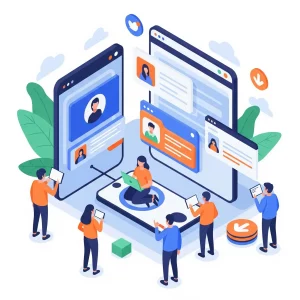
Personalization increases customer loyalty and sales. When customers feel a brand understands them, they are more likely to buy and become repeat customers.
Facts and Figures:
- A significant 73% of marketers believe AI plays a key role in creating a personalized customer experience. (Digital Marketing Institute)
- AI-driven personalization is a top trend for 2025. Marketers use tools to analyze customer data and provide individualized experiences in real time.
- 73% of consumers expect personalized experiences. (TheeDigital)
Examples:
- Netflix: Netflix’s recommendation system is a great example of hyper-personalization. It looks at viewing history to suggest movies and TV shows individual users will enjoy.
- Spotify: Spotify’s “Discover Weekly” and “Release Radar” playlists use AI to give users personalized music recommendations.
- Fit Bod: Fit Bod tailors fitness plans using AI, which makes users happier.
- E-commerce platforms like Amazon suggest products based on Browse and purchase history.
6. Data-Driven Marketing and Marketing Mix Modeling are Essential
Data-driven marketing is crucial for understanding how well campaigns perform. Marketing mix models give detailed information across all marketing channels.
By analyzing data, brands can make better decisions about where to put their marketing efforts. This leads to more effective campaigns and a better return on investment.
Facts and Figures:
- Tools like Google’s Meridian, set for global release in 2025, offer clear ways to measure performance.
- Fewer than 20% of businesses have structured testing programs. This shows a need for more optimization. (Smart Insights)
Examples:
- Google Meridian: This tool analyzes how campaigns perform across different channels for brands.
7. Retail Media Networks (RMNs) are Growing
Retail Media Networks (RMNs) are advanced advertising platforms run by retailers. They allow for targeted and personalized ads.
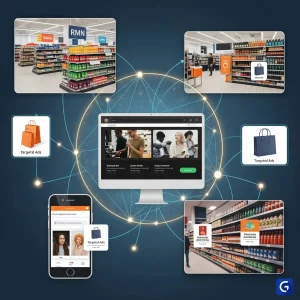
RMNs use first-party data to target ads precisely. This means brands can reach the right customers directly on platforms where they are already shopping.
Facts and Figures:
- RMNs will make up nearly 25% of US media ad spending by 2028. (Kantar)
- 41% of marketers plan to increase their investment in RMNs in 2025. (Kantar)
Examples:
- Walmart and Target: These retailers offer RMNs for brands to reach specific audiences.
8. Sustainability and Ethical Marketing are Important
Consumers care about sustainability, which influences brands to adopt ethical marketing practices.
Brands that show a commitment to sustainability build trust with consumers. This can lead to increased sales and loyalty from environmentally conscious buyers.
Facts and Figures:
- 80% of consumers are willing to pay more for sustainable goods. (TheeDigital)
Examples:
- Patagonia: This brand highlights sustainable practices in its marketing campaigns.
9. Immersive Experiences with AR and VR are Here
Augmented Reality (AR) and Virtual Reality (VR) create engaging brand experiences. They make customer interaction better.

These technologies make marketing more interactive and memorable. They allow customers to try products virtually or experience events in a new way, enhancing their connection with the brand.
Examples:
- Sephora: This beauty retailer offers AR-based virtual makeup try-ons.
- Brands host virtual events in the metaverse for engaging experiences.
10. Privacy and Data Security are Crucial
Stricter rules like GDPR and CCPA mean brands must prioritize data privacy while still offering personalization.

Building trust with your audience is most important. A transparent and ethical approach to data privacy can give you an advantage over competitors. It makes marketers focus on building direct relationships with their customers and giving real value in exchange for their data.
Facts and Figures:
- Cookie consent will be required starting January 27, 2025. (TheeDigital)
Examples:
- The New York Times: This media company has built a large subscriber base by offering high-quality content and being clear about how they use user data.
- Unilever: This consumer goods company increasingly uses first-party data from its brand websites and consumer surveys to guide its marketing strategies. This reduces its reliance on third-party data.
- Websites now show clear messages asking for cookie consent.
- Brands ensure they use data transparently in marketing campaigns.
Sources and Citations:
- https://www.mckinsey.com/capabilities/quantumblack/our-insights/the-state-of-ai
- https://digitalmarketinginstitute.com/blog/10-eye-opening-ai-marketing-stats-in-2025
- https://coschedule.com/ai-marketing-statistics
- https://www.theedigital.com/blog/digital-marketing-trends
- https://www.sevenatoms.com/blog/voice-search-trends
- https://digitalmarketinginstitute.com/blog/10-eye-opening-ai-marketing-stats-in-2025

